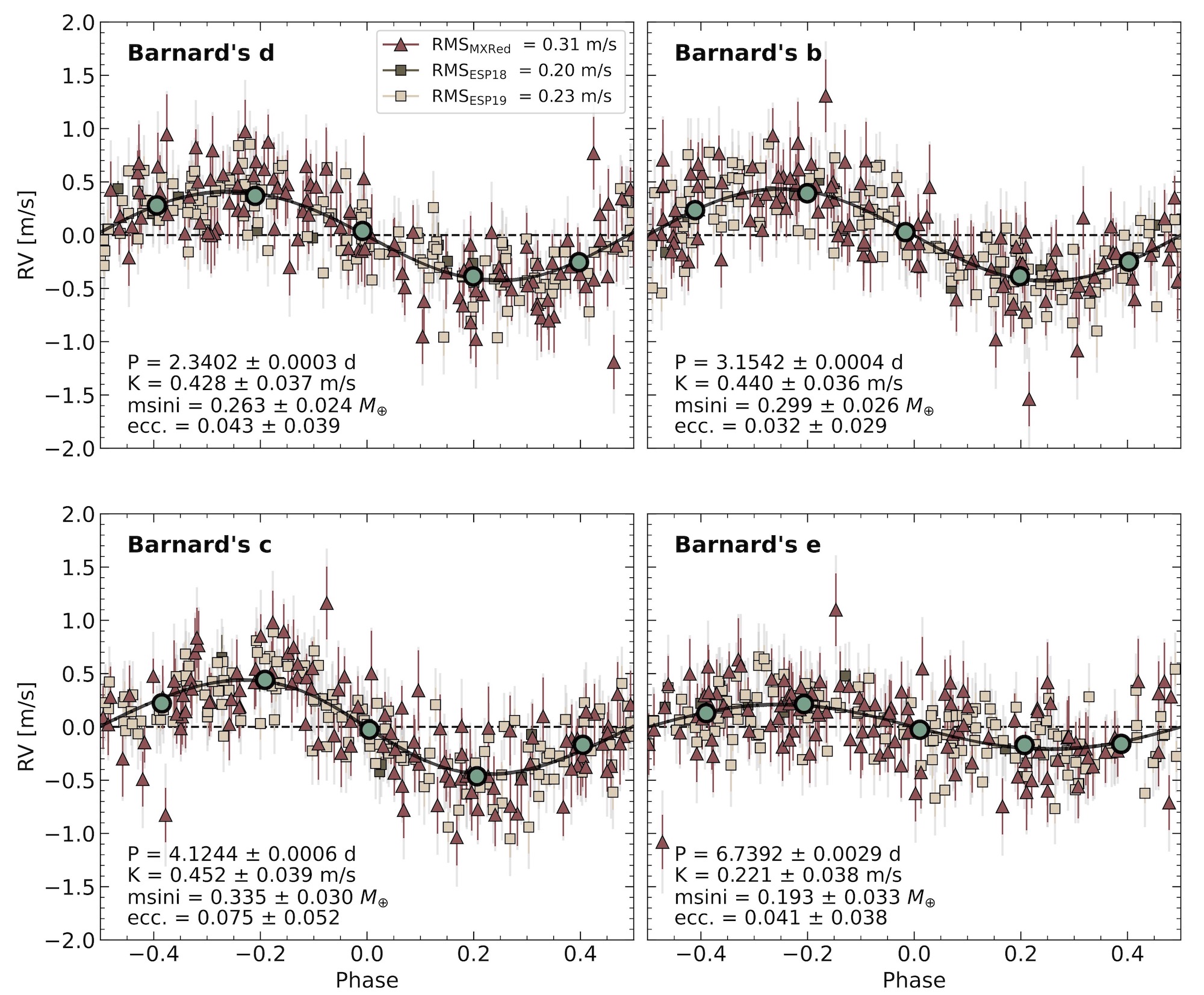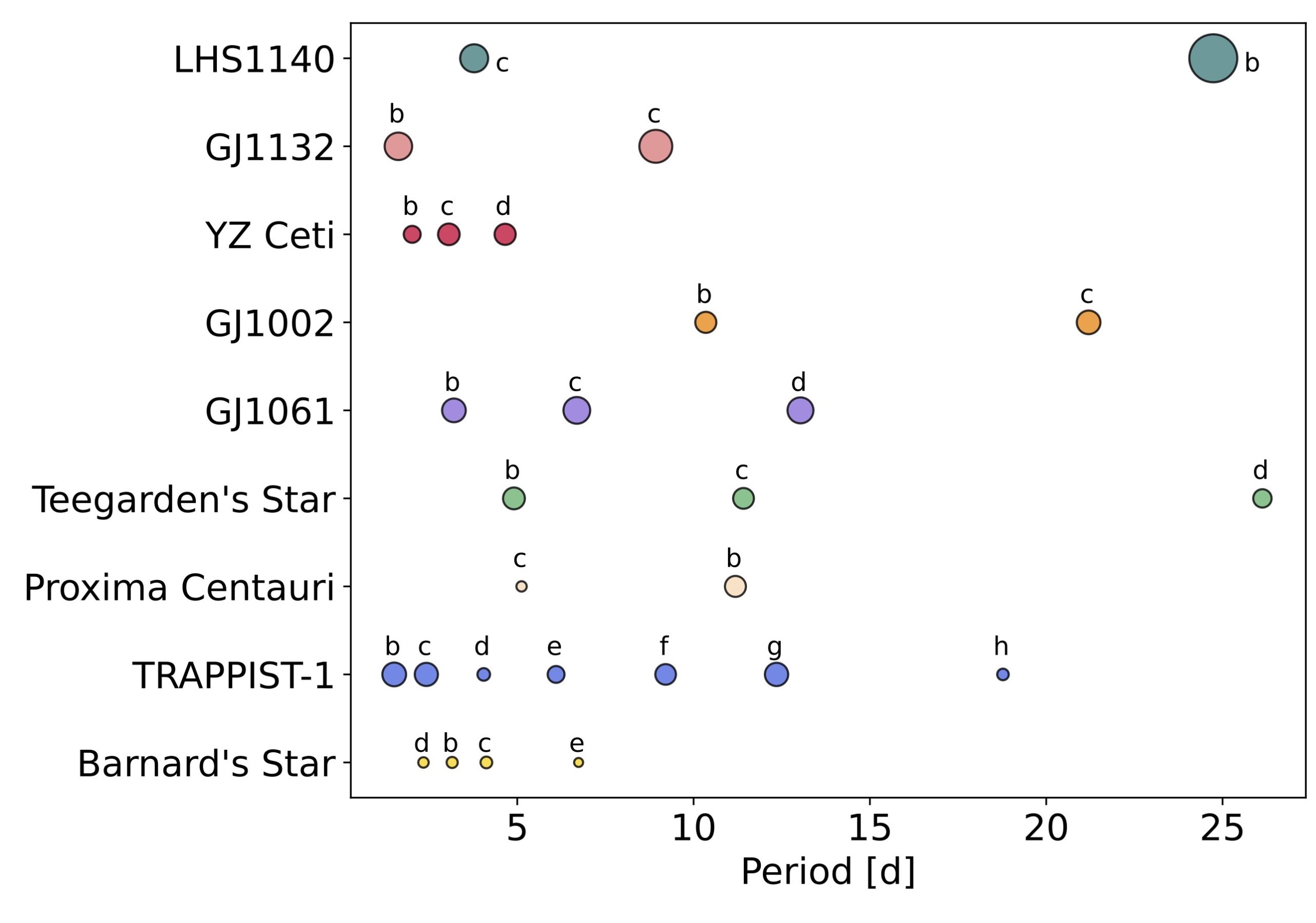From - Sky & Telescope
By - AAA Nova
Edited by - Amal Udawatta

International Gemini Observatory/NOIRLab/NSF/AURA/R. Proctor/J. Pollard
Following decades of disproven claims, four small exoplanets have been confirmed to orbit Barnard’s Star, the second-closest star system to Earth after Alpha Centauri.
System Under Scrutiny
Just 6 light-years away, Barnard’s Star is a well-studied 10-billion-year-old M dwarf with a mass of 0.16 solar mass. Finding exoplanets around Barnard’s Star has been something of a white whale for astronomers for more than half a century; starting in the 1960s, researchers have claimed to have spotted various planets around Barnard’s Star, from distant Jupiter-mass companions to close-in super-Earths. Each of these claims has been refuted.

NASA/Penn State University
Now, the white whale appears to have been caught at last. Just last November, researchers reported the discovery of a planet orbiting Barnard’s Star with a period of 3.154 days. The data hinted at the presence of three other planets, but these candidates could not be confirmed. In a new research article published today, Ritvik Basant (University of Chicago) and collaborators leveraged years of data to confirm that Barnard’s Star hosts not just one, but four planets.
The team observed Barnard’s Star from 2021 to 2023 with the M dwarf Advanced Radial velocity Observer Of Neighboring eXoplanets (MAROON-X), a spectrograph tailored to the properties of M dwarfs. Basant and coauthors searched the MAROON-X data for subtle shifts in spectral lines indicating the change in the star’s radial velocity from planets tugging on the star as they orbit.

Adapted from Basant et al. / Astrophysical Journal Letters 2025
This search was complicated by periodic signals related to the star’s activity cycle and rotation period, which the authors modeled and removed from the data. With these interfering signals removed, two clear signals emerged from the previously detected planet Barnard b and the planet candidate Barnard d, as well as a less-robust signal from the candidate Barnard c. The team then iteratively modeled and removed statistically significant signals until no significant signals remained in the data. This analysis showed that the fit statistics improved with each successive planet, confirming the presence of planets b, c, and d.
After removing the signals from the three confirmed planets, a tiny amount of signal remained at the period of the planet candidate e — but not enough to confirm its presence. To investigate further, Basant’s team jointly modeled their MAROON-X data with the data that led to the discovery of Barnard b last November. This improved the statistics and strengthened the evidence for planet e, confirming its existence.
More to Learn
Ultimately, Basant’s team confirmed the presence of four planets with minimum masses between 19% and 34% of Earth’s mass. Barnard e is possibly the lowest-mass planet to be detected using the radial-velocity method.

Adapted from Basant et al. / Astrophysical Journal Letters 2025
These planets are in remarkably close quarters, with periods of just 2.34, 3.15, 4.12, and 6.74 days. Is such a compact setup likely to be stable? Using a machine-learning algorithm, the team showed that if the planets have perfectly circular orbits, the system is stable long term. However, using the best-fitting orbital parameters — which are consistent with circular orbits within 1.5 sigma — the system became unstable within just 2,000 years. More work is needed to understand the orbits of the newfound planets and the long-term stability of the system.
Now, for the million-dollar question: could any of these planets be habitable? None of the newly discovered planets lie within Barnard’s Star’s habitable zone, which spans orbital periods from 10 to 42 days. The current data also rule out the presence of habitable-zone planets with masses greater than 0.57 Earth mass, though smaller planets are still possible.
Comments
Post a Comment